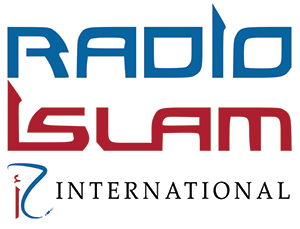Prevent, Diagnose and Treatment
Researchers estimate that 82% to 90% of strokes are preventable. While lifestyle changes can’t prevent all strokes, many of these changes can make a significant difference in lowering your risk.
Experts recommend you consider the following:
Quit smoking: If you smoke, quitting now will lower your risk of stroke. You can reach out to a doctor to create a quit plan.
No alcohol: Alcohol consumption can raise your blood pressure, which in turn increases the risk of stroke. It is a great thing that Islam doesn’t allow us to consume or indulge.
Keep a moderate weight: Overweight and obesity increases the risk of stroke. To help manage your weight, eat a balanced diet and stay physically active. Both steps can also reduce blood pressure and cholesterol levels.
Get regular check-ups: Talk with a doctor about how often to get a check-up for blood pressure, cholesterol, and any conditions you may have. They can also support you in making these lifestyle changes and offer guidance.
How do doctors diagnose stroke?
To diagnose stroke, a doctor will first ask you or a family member about your symptoms and what you were doing when they arose. They’ll take your medical history to find out your stroke risk factors. They’ll also:
- ask what medications you take
- check your blood pressure
- listen to your heart
You’ll also have a physical exam, during which your doctor will evaluate you for:
- balance
- coordination
- weakness
- numbness in your arms, face, or legs
- signs of confusion
- vision issues
Your doctor will then do certain imaging and blood tests to help confirm a stroke diagnosis. These tests can help them determine whether you had a stroke and, if so:
- what may have caused it
- what part of the brain is affected?
- whether you have bleeding in the brain
What is the treatment for stroke?
Proper medical evaluation and prompt treatment are vital to recovering from a stroke. Treatment will depend on the type of stroke.
Ischemic stroke and TIA
Since a blood clot or blockage in the brain causes these stroke types, doctors essentially treat them with similar techniques. They can include:
- thrombolytic drugs, namely tissue plasminogen activator (tPA or Atlepase), to break up blood clots in your brain’s arteries within 4.5 hours of the onset of symptoms
- mechanical thrombectomy to remove the blood clot within 24 hours of symptom onset
- stents to support weakened artery walls
- surgery to remove plaque from your arteries
- aspirin or other blood thinners to prevent further blood clots
Haemorrhagic stroke
Strokes caused by bleeds or leaks in the brain require different treatment strategies. Treatments for haemorrhagic stroke include:
- medications to reduce blood pressure, prevent seizures, and prevent blood vessel constriction
- surgery to repair the brain aneurysm, usually by processes called coiling or clipping
- craniotomy to relieve pressure on the brain
In addition to emergency treatment, your healthcare team will advise you on ways to prevent future strokes.
What can I expect during recovery from a stroke?
Stroke is a leading cause of disability. While many people will fully recover, some will have long-term disabilities.
It’s important that recovery and rehabilitation from a stroke start as soon as possible. In fact, stroke recovery should begin in the hospital.
In a hospital, a care team can stabilize your condition and assess the effects of the stroke. They can identify underlying factors and begin therapy to help you regain some of your affected skills.
Stroke recovery typically focuses on four main areas:
- speech therapy to relearn how to speak and help with swallowing difficulties
- cognitive therapy to regain former patterns of thinking and behaviour
- relearning sensory skills, such as temperature, pressure, and pain, often with the help of an occupational therapist
- physical therapy to regain strength and balance and adjust to any limitations





0 Comments